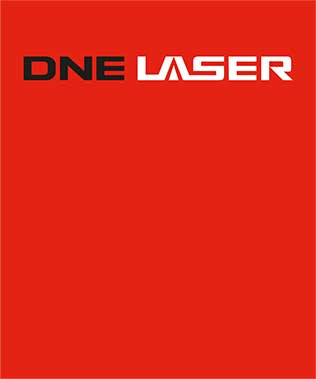What are the auxiliary gases of the laser cutting machine?
Published:2021-02-02 Browse:25Editor in charge:DNE Laser (Member of Bystronic)
We know that the cutting principle of the laser cutting machine is that the high-energy-density laser beam melts or vaporizes the surface of the material. As the cutting head moves, the material is cut. The role of the auxiliary gas is to blow the molten slag away from the coaxial slit to form a good cutting section. In addition, the high-pressure and high-speed airflow can cool the surface of the processed object, reduce the heat-affected zone, and make the processed workpiece more precise; at the same time, it cools the focusing lens to prevent smoke and dust from entering the lens holder to pollute the lens and cause the lens to overheat. The choice of gas has a great influence on the processing technology, so which auxiliary gas is usually used for laser cutting?
Compressed Air
Air can be provided directly by an air compressor, so the price is very cheap compared with other gases. Air is suitable for cutting aluminum plates, aluminum alloys, galvanized steel plates, non-metals, etc. Because the air contains about 20% oxygen, a trace oxide film will appear on the cutting surface, and the end surface of the cut will become yellow. The material can be thinner and the cutting section is required. Used when it is not very high.
Used in sheet metal processing, chassis cabinets, elevator cabinets, and other industries.
Oxygen
Oxygen mainly plays a role in supporting combustion. While using oxygen reaction heat to greatly improve the cutting efficiency, the oxide film produced will increase the beam spectral absorption factor of the reflective material, so that the laser energy is more effectively used and the cutting efficiency is improved. Suitable for cutting thick plates.
It can cut rolled steel, carbon steel, high tensile steel, stainless steel, electroplated steel, copper, copper alloy, etc.
Nitrogen
Nitrogen is an inert gas and will not oxidize with high-temperature materials, and can perform non-oxidation cutting to prevent the appearance of oxide films. The non-oxidized cutting surface has the characteristics of direct welding and painting and strong corrosion resistance. It can be used in special parts such as aerospace and decoration industries.
The main applicable plates are stainless steel, electroplated steel plate, brass, aluminum, aluminum alloy, etc.
When performing laser cutting, it is not only necessary to select the appropriate auxiliary gas, but also to control the gas pressure and flow rate. Only by adjusting the appropriate parameters can the best cutting performance and product quality be achieved.
 Bystronic (Shenzhen) Laser Technology Co., Ltd.
Bystronic (Shenzhen) Laser Technology Co., Ltd.